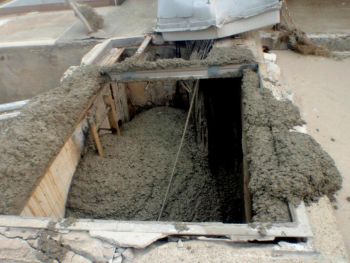ORIGINALLY PUBLISHED: 12:45pm GMT
A crack in a system of concrete trenches and tunnels has been identified as a possible route through which water has been leaking to the sea from Fukushima Daiichi unit 2. Work is under way to seal the crack.
 |
| Concrete was poured into the shaft in attempts to stop the crack (Image: Tepco) |
Water had previously been discovered in a concrete shaft which carries power cables to the plant's sea water intake pumps. Water was seen spilling into the sea from a crack in the side of the shaft measuring some 20 centimetres. On 2 April Tokyo Electric Power Company (Tepco) tried twice to stop the leak by pouring concrete into the shaft, but this failed to change the rate of water leakage. The next day the company tried injecting polymer into the shaft as another way to end the discharges. This was followed with the injection of a tracer to enable the water flow patterns to be examined.
The system of tunnels which is connected to the bottom of the turbine building for unit 2 also connects to the shaft, and it is now assumed that contaminated water from the turbine building has flowed into the shaft and through the crack into the sea. In response, Tepco has added three additional offshore sampling stations to monitor discharges.
Researched and written
by World Nuclear News




_18570.jpg)
_16159.jpg)
_49205.jpg)
_18938.jpg)





